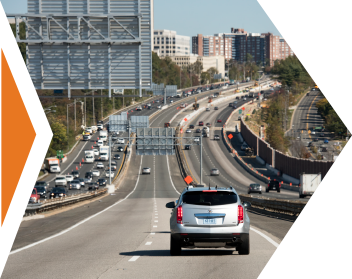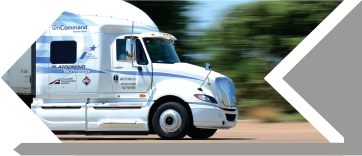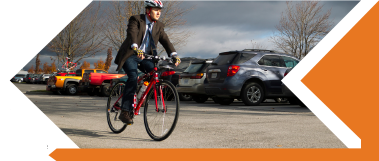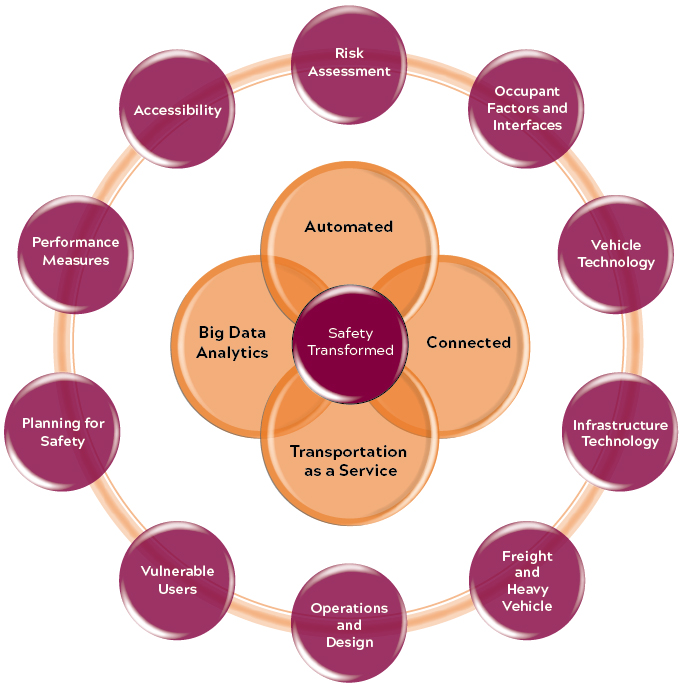Center Background

The nation’s top safety researchers will perform work under the center while leveraging existing and upcoming world-class research facilities across the universities, such as the Virginia Automated and Connected Corridors, the Virginia Smart Road, and the Automation Park, all of which will collectively enable robust real-world testing of automated and connected vehicles.
Research Themes
Connected Vehicles
Connected-vehicle technology facilitates a system in which vehicles, infrastructure, and other devices communicate wirelessly to alert the traveling public of such challenges as impending collisions, congestion, roadway hazards, and inclement weather. The Safe-D UTC is guiding technology, national standards, and policies in relation to the successful implementation of connected-vehicle technology toward realizing its goal of reducing up to 80% of non-impaired crashes and serving as a strong foundation for the advancement of automated-vehicle technology.


Automated Vehicles
Automated vehicles are coming online at a rapid pace. There are many potential advantages to the widespread use of automated vehicles, from fewer traffic collisions to increased accessibility. However, numerous unanswered research questions are impeding the safety performance and possibly leading to undesired negative outcomes if left unanswered. The Safe-D UTC is responding with targeted research projects led by the industry’s top experts, along with their students, to prepare the technology and the forthcoming workforce for the arrival of highly automated driving systems
Transportation as a Service
Transportation is increasingly focused on enabling users to seamlessly travel using various modes of transportation, such as walking, biking, and driving, thus enabling ubiquitous mobility and eliminating the need for personal vehicle ownership. With a growing strain placed on surface transportation due to continued population growth, longer lifespans, increased freight movement, and emerging megaregions, the Safe-D UTC is dedicated to addressing and mitigating national issues quickly bearing down on the U.S. transportation system by acquiring the knowledge necessary to ensure these disruptive service models maximize safety across the system.


Big Data Analytics
The application of “big data” is intrinsic to improved transportation and can help address an infinite number of safety-related questions, from pinpointing roadway facilities that need improvement to supporting operational decisions at both infrastructure and vehicles interfaces. The disruption in this area is focused on novel real-time big data sources as well as their accompanying analytics and visualizations to support decisions and associated responses that maximize safety. The Safe-D UTC is committed to assembling large- scale databases and world-class advanced analytics with the aim of maximizing value novel transportation data sources.
Application Areas and Examples

Planning for Safety
Strategic Highway Safety Plans, Highway Safety Manual Systemic Safety Assessment, Roadway Safety Audits
Risk Assessment
Exposure calculations, odds ratios, pre-crash indicators
Occupant Factors and Interfaces
Human factors, in-vehicle, and portable devices, driver state monitoring, driver training
Vehicle Technology
Advanced driver assistance systems, adaptive headlamps
Infrastructure Technology
Safety aspects of digital asset management, roadside, and roadway system monitoring, smart intersections
Freight and Heavy Vehicle
Truck safety systems and operators, highway-rail grade crossing safety
Operations and Design
Traffic control devices, speed limits, roadway design, work zones
Vulnerable Users
Pedestrian, bicycle, motorcycle, special populations (children, elderly, those with disabilities)
Performance Measures
Safety performance indicators, safety improvement plans, performance assessment methods
Accessibility
Equitable access to advanced transportation options by populations with physical and/or mental disabilities
